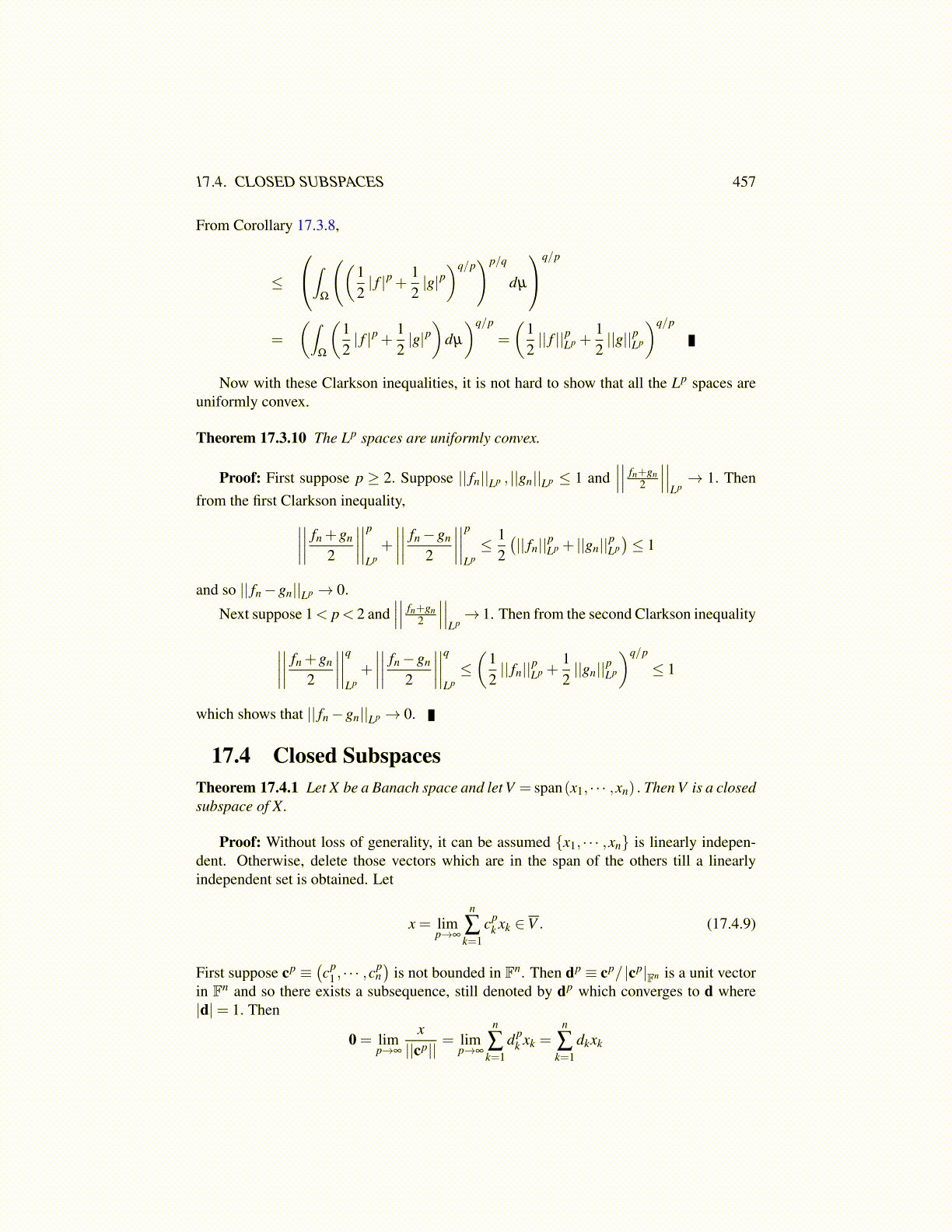
17.4. CLOSED SUBSPACES 457
From Corollary 17.3.8,
≤
∫Ω
((12| f |p + 1
2|g|p)q/p
)p/q
dµ
q/p
=
(∫Ω
(12| f |p + 1
2|g|p)
dµ
)q/p
=
(12|| f ||pLp +
12||g||pLp
)q/p
Now with these Clarkson inequalities, it is not hard to show that all the Lp spaces areuniformly convex.
Theorem 17.3.10 The Lp spaces are uniformly convex.
Proof: First suppose p ≥ 2. Suppose || fn||Lp , ||gn||Lp ≤ 1 and∣∣∣∣∣∣ fn+gn
2
∣∣∣∣∣∣Lp→ 1. Then
from the first Clarkson inequality,∣∣∣∣∣∣∣∣ fn +gn
2
∣∣∣∣∣∣∣∣pLp+
∣∣∣∣∣∣∣∣ fn−gn
2
∣∣∣∣∣∣∣∣pLp≤ 1
2(|| fn||pLp + ||gn||pLp
)≤ 1
and so || fn−gn||Lp → 0.
Next suppose 1< p< 2 and∣∣∣∣∣∣ fn+gn
2
∣∣∣∣∣∣Lp→ 1. Then from the second Clarkson inequality
∣∣∣∣∣∣∣∣ fn +gn
2
∣∣∣∣∣∣∣∣qLp+
∣∣∣∣∣∣∣∣ fn−gn
2
∣∣∣∣∣∣∣∣qLp≤(
12|| fn||pLp +
12||gn||pLp
)q/p
≤ 1
which shows that || fn−gn||Lp → 0.
17.4 Closed SubspacesTheorem 17.4.1 Let X be a Banach space and let V = span(x1, · · · ,xn) . Then V is a closedsubspace of X.
Proof: Without loss of generality, it can be assumed {x1, · · · ,xn} is linearly indepen-dent. Otherwise, delete those vectors which are in the span of the others till a linearlyindependent set is obtained. Let
x = limp→∞
n
∑k=1
cpk xk ∈V . (17.4.9)
First suppose cp ≡(cp
1 , · · · ,cpn)
is not bounded in Fn. Then dp ≡ cp/ |cp|Fn is a unit vectorin Fn and so there exists a subsequence, still denoted by dp which converges to d where|d|= 1. Then
0 = limp→∞
x||cp|| = lim
p→∞
n
∑k=1
dpk xk =
n
∑k=1
dkxk